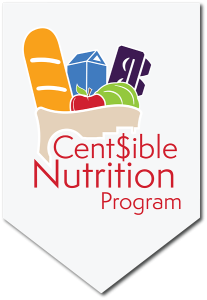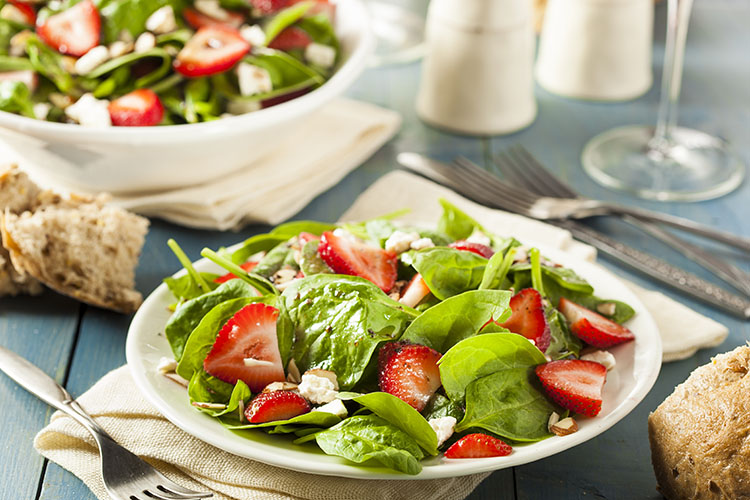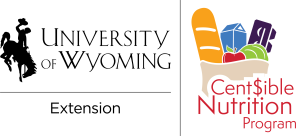Spinach, like lettuce, is a vegetable that likes cooler weather. Spinach is also very nutritious, providing fiber, potassium, iron, protein, and calcium. It grows well in early spring and late summer. With the right weather, some types of spinach can be ready to harvest in just 40 days.
Growing
- Plant seeds in early May for a spring harvest or in late July for a fall harvest. Space seeds 12-18 inches apart and cover with ½ of soil.
- In the heat of summer, spinach tends to bolt, or go to seed, then stop growing. Replanting in late summer for a fall harvest may be a good idea, if this happens.
- Try spacing out the time between planting seeds to produce spinach over a longer period.
- Thin plants to 4 to 6 inches apart.
- If your garden space is limited, spinach grows well in container gardens.
Harvesting
- When spinach plants reach 4-6 inches in diameter, cut the whole plant at soil level.
- You can also pick just the outer leaves of the plant when they are several inches long, giving the inside leaves more time to grow.
- Spinach can become bitter the bigger the plant becomes.
- Harvest in the cooler part of the day to make the harvested spinach last longer. It is best to use spinach the day you harvest it.
Suggested varieties: Avon, Bloomsdale Long Standing, Teton, Tyee
Happy gardening!
Information summarized from UW Extension publications by Katie Shockley, Writer/Editor, University of Wyoming Extension Communications & Technology.
Spinach, like lettuce, is a vegetable that likes cooler weather. Spinach is also very nutritious, providing fiber, potassium, iron, protein, and calcium. It grows well in early spring and late summer. With the right weather, some types of spinach can be ready to harvest in just 40 days.
Growing
- Plant seeds in early May for a spring harvest or in late July for a fall harvest. Space seeds 12-18 inches apart and cover with ½ of soil.
- In the heat of summer, spinach tends to bolt, or go to seed, then stop growing. Replanting in late summer for a fall harvest may be a good idea, if this happens.
- Try spacing out the time between planting seeds to produce spinach over a longer period.
- Thin plants to 4 to 6 inches apart.
- If your garden space is limited, spinach grows well in container gardens.
Harvesting
- When spinach plants reach 4-6 inches in diameter, cut the whole plant at soil level.
- You can also pick just the outer leaves of the plant when they are several inches long, giving the inside leaves more time to grow.
- Spinach can become bitter the bigger the plant becomes.
- Harvest in the cooler part of the day to make the harvested spinach last longer. It is best to use spinach the day you harvest it.
Suggested varieties: Avon, Bloomsdale Long Standing, Teton, Tyee
Happy gardening!
Information summarized from UW Extension publications by Katie Shockley, Writer/Editor, University of Wyoming Extension Communications & Technology.
Sweet, savory, tangy, and crunchy, this salad provides it all! Summer Strawberry Salad combines spinach and strawberries with a homemade dressing that wakes up your taste buds and bring a burst of flavor to your day. Yum!
Additional Resources
Learn more about growing and harvesting spinach with these resources from the University of Wyoming Extension:
- University of Wyoming Extension Publication: Gardening: Vegetables in Wyoming
- Video: Container Gardens
Next up: Herbs [Coming August 14]



